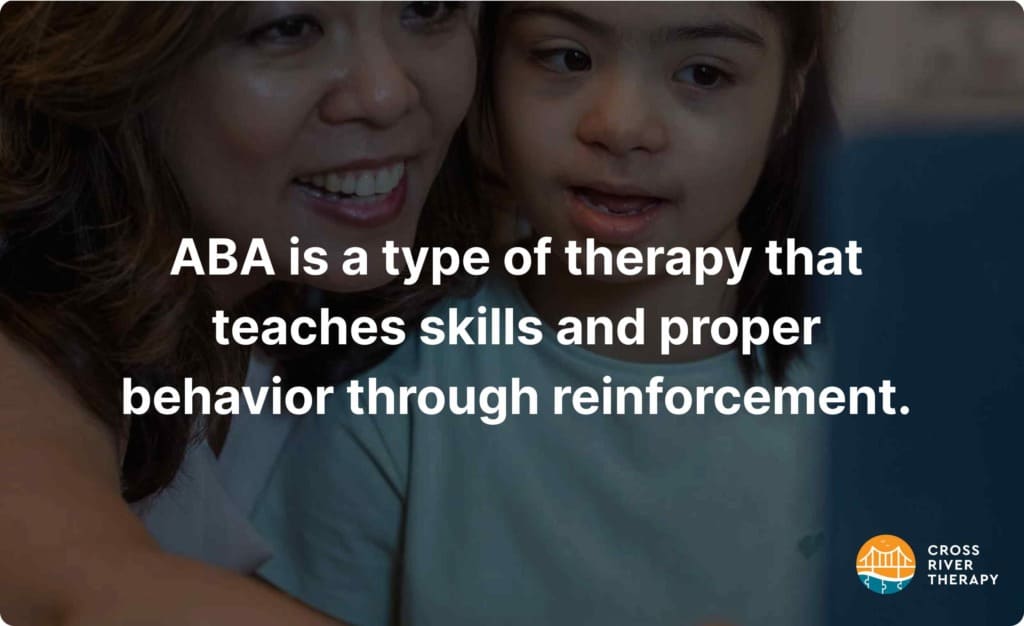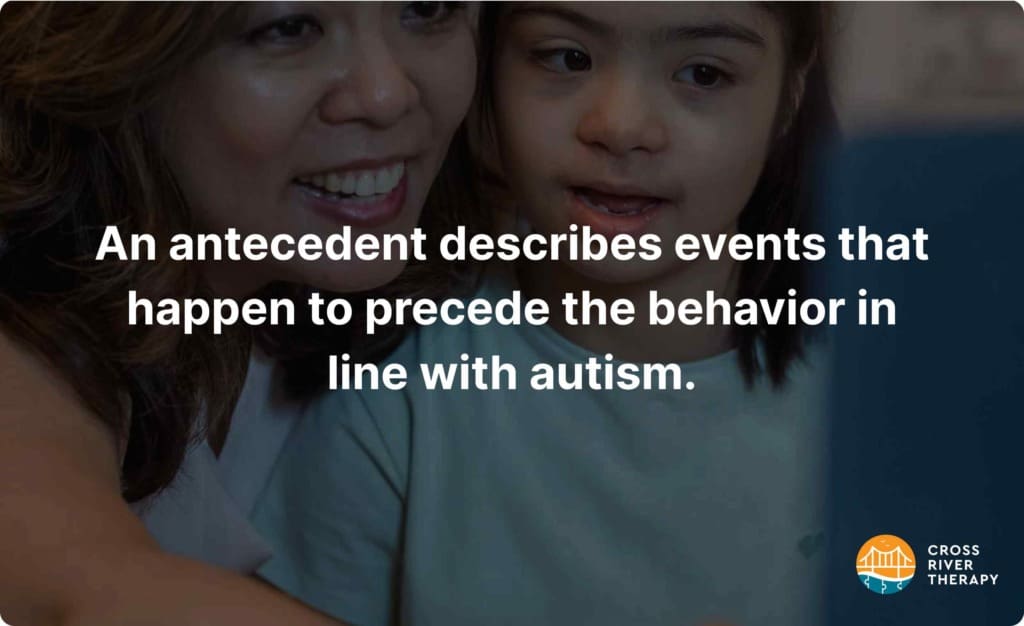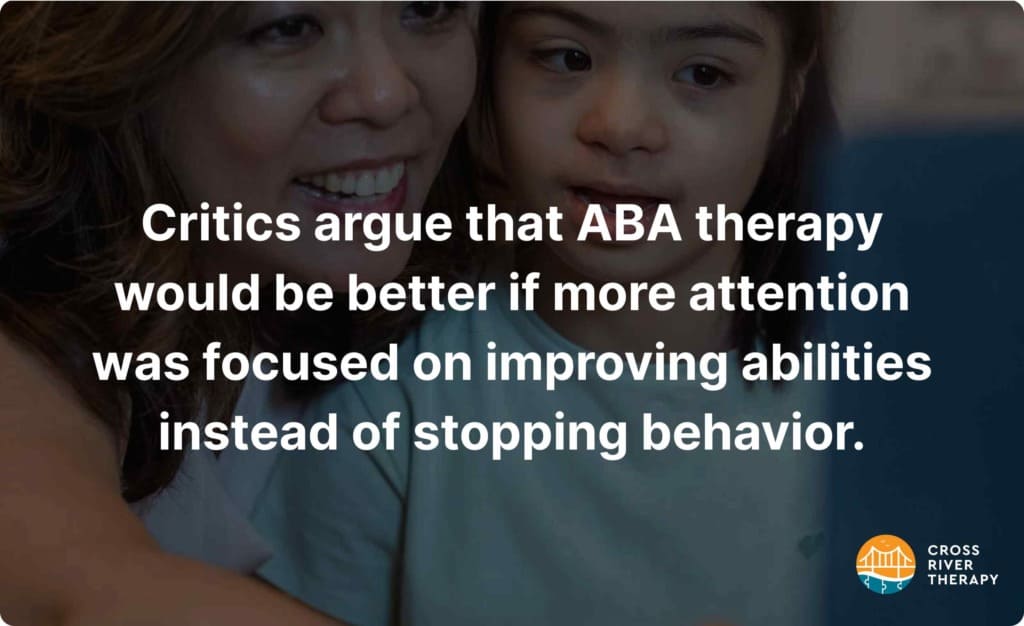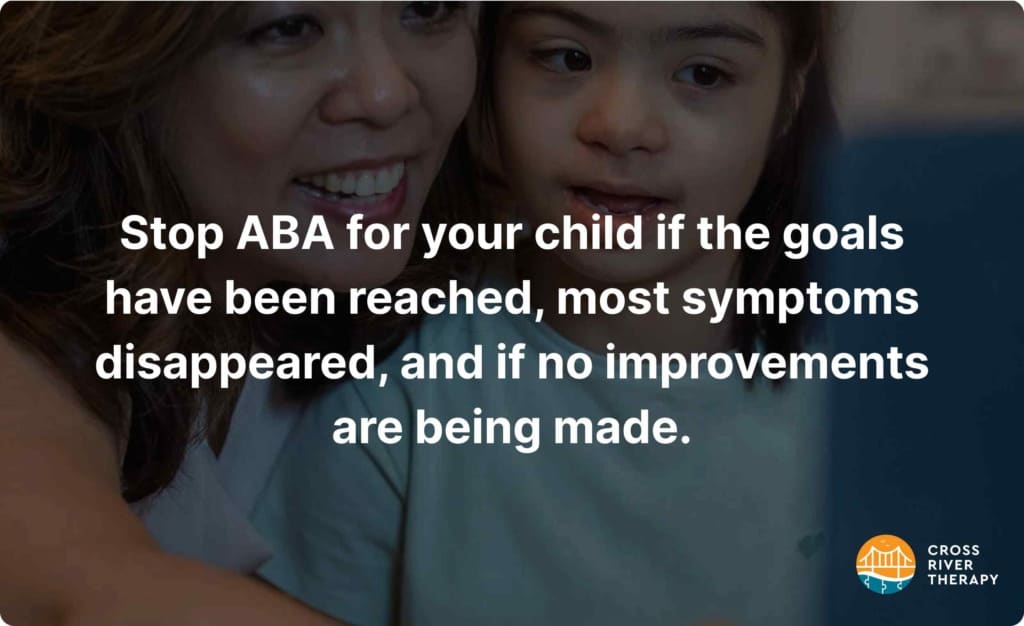What Is ABA Therapy For Autism?
Learn everything you need to know about Applied Behavior Analysis (ABA) therapy. This definitive guide will walk you through ABA therapy for autism.

What is Applied Behavior Analysis?
ABA therapy is a behavioral therapy based on the science of learning and behavior. It focuses on improving social and communication skills, improving learning, reducing negative behaviors, and increasing positive behaviors. ABA therapy is a behavioral therapy for children diagnosed with autism. It applies our understanding of how behavior works to real situations.
ABA therapy applies our understanding of how behavior works to real life situations. The goal of the therapy is to increase behaviors that are positive and decrease behaviors that are negative or harmful.

What does ABA therapy stand for?
ABA therapy stands for Applied Behavior Analysis therapy which is based on the science of learning and behavior.Autism is a spectrum disorder that affects tens of millions worldwide. Within this number are millions of children, some of which have never been diagnosed with autism. Diagnosis is an important part of giving autistic children beneficial therapy. ABA therapy, or Applied Behavioral Analysis, focuses on relationship building.
Gregarious children with strong behavioral and social skills are in a better position to succeed, in the classroom and far beyond their grade school years. The objective of ABA is to enhance a child’s personable skills, interactions within their peer group and those outside of it, and their ability to socialize with different people.
Being therapeutic, the concept involves interacting with a child in several steps, each having a set of benefits or unfavorable outcomes.
Compared to similar forms of treatment, ABA therapy is widespread and designed to mitigate the symptoms of children on the spectrum. With proper care and understanding of a child’s needs, its characteristics can be addressed with positive results.
History of ABA
ABA therapy begins with Dr. Ivar Lovaas, a specialist in behavioral psychology. He is the first to use ABA therapy in his treatment of autism, believing that autistic children’s ability to interact and their environment was imperative to them improving the disorder’s symptoms. If the treatment was successful, he theorized that their autism could be altered or eliminated.
Once symptoms common with autism weren’t recorded, Dr. Ivar Lovaas speculated that the disorder was no longer present.
At one time, ABA therapy had qualities that in today’s society would be considered draconian. It would incorporate controversial activities such as electroshock therapy and other extremities. Currently, such procedures are no longer a part of ABA treatment. Instead, penalizing activities conform more to the identical standards of parents treating their children, meaning the holdback of certain privileges.
In one instance, a child that doesn’t give an appropriate reaction to a directive has their reward delayed.
Regardless, Lovaas’ palatable techniques have been refined over time, corrected, and advanced by researchers and professionals to better understand autism. The aim for them is to assist patients in adapting to their autism, not to force unwanted and unrealistic changes upon their lives.
Read More: ABA Therapy Success Rates

How ABA Therapy Works
ABA incorporates different approaches to identify an individual’s behavioral characteristics related to their autism. It’s versatile and nonlinear, involving the following procedures:
- Adaptation to conform to what a child needs, according to their profile
- Therapy in areas outside of a clinical setting. Schools, in-home sessions, and other suitable locations that are within the patient’s neighborhood
- The stimulus of behavior that increases the likelihood of said behavior happening again, also known as positive reinforcement
- The teaching of abilities applicable to day-to-day occurrences
- Group sessions involving multiple people with more hands-on mutual teaching
Behavior that leads to the result of something that’s favored by the patient, a repeat of the same behavior will increase. As the treatment progresses, preferred behavioral advances become normalized.
However, therapy’s onset begins by finding a goal, a behavior that’s inclined to give positive results. Pending good conduct, the therapist administers a reward to the patient. It must be something worthwhile. Verbal approval of the behavior, playtime with a doll or action figure, access to a favored piece of music or web video, and free time in a play area are some examples.
What is an Antecedent in ABA Therapy?
In basic terms, an antecedent describes events that happen to precede the behavior in line with autism. It also describes the setbacks or consequences that take place following the same behavioral event. Understanding antecedent behavior is an integral part of ABA.

Specifically, an antecedent happens immediately before the behavior of a patient. In many cases, the event involves spoken commands or an appeal but can also be physical situations. Maybe there’s a specific sound or fixture that’s characteristic of the antecedent. Environmental factors may brighten certain moods or sentiments. Moving on is the behavior that results from the preceding event. It’s their reaction, or lack thereof, to what previously happened. Again, a reply or physical response can be a part of this.
The third is the consequential result that happens from the behavior later on. If the behavior is wanted, then positive reinforcement is suggested. If not, then the lack of a reaction may suffice for a better result in the future. For example, if a parent demands that their child come back inside and the child shouts no in protest, the parent could take away some of the toys that were played with outdoors.
The antecedent is the request for them to come back inside. The behavior is the disobeyed reaction by verbal means, and the consequence is the confiscation of their outdoor toys.
Examples of ABA therapy programs
Some programs common among ABA sessions are as follows:
- Reinforcement Systems – For learning the unfortunate effects of certain behaviors.
- Exchange through picture communication – Involves receiving and giving requests through the identification of objects in photos.
- Digital modeling – Used by therapists to perform tasks through audio and video messaging.
- Discrete Trial – The most direct approach to ABA therapy. The therapist encourages a behavior by speech and rewards based on the behavior exhibited after requests.

Benefits and drawbacks
Benefits
ABA therapy has been beneficial but remains contested by some, first are the positive aspects of the therapy.
Numerous studies reveal that ABA can assist in the development abilities of people on the spectrum. They conclude that ABA provides lasting good results to many with autism. These results range from newly acquired skills, greatly improved social skills, and better long-term behavioral improvements. It can raise the IQ of autistic children and lower unwanted effects on diagnosed patients. ABA is also great for helping the autistic learn simplistic and more sophisticated abilities. For instance, giving a small token of reward for a child for washing themselves properly is simple, whereas a major gift is made after finishing a group project with their peers is complex.
ABA therapy companies can also give parents or guardians better guidance on speaking by breaking down the words into consonants and syllables. Overall, ABA solidifies the fact that children with autism can learn and grow their cognitive abilities at a pace that’s consistent with their peers.
Drawbacks
Punishment is no longer a part of the ABA treatment. Therefore, it’s irrelevant to any novel critique of the therapy. Still, some contend that it’s a bit unpleasant for some or most autistic people. Here are the most frequent complaints of ABA:
- Too much of stopping behavior than improving abilities – Since ABA focuses on behavior changes, critics argue that the therapy would be better if more attention were focused on raising their language, reading, and socializing abilities. They argue that a better understanding of such abilities would result in the autistic pickup on acceptable behavior without the expectation of a reward.
- Unwarranted emphasis on getting children to act a specific way – ABA therapy has been described as a treatment that discourages kids from being themselves, coaxing them to act the same as those in their peer group. According to those with this view, ABA may inadvertently discourage creativity or their natural talent, implying to them that thinking or coming up with new harmless ideas is frowned upon.

Principles
Here are ABA’s main principles:
- The environment is a major contributor to the behavior present with autism. It can be argued that this principle applies to the population at large, even those without autism.
- The result of behaviors are the consequences that follow it, both wanted and unwanted.
- Good results of consequences can change behavior patterns for the better, rather than uncooperative behavior.
- To comply with what’s acceptable in a social setting and what isn’t, behavior patterns must be firmly understood and disciplined as needed.
Goals
Much of the description concerning ABA is related to how the therapy works and an objective scrutinization of it. But what about the end goals? The overall goal for ABA therapy is subject to the child’s requirements for improving their behavioral and learning abilities. Nevertheless, here are some of the goals that parents should expect to reach:
- A bigger interest in interacting with everyone, teachers and school staff included – A child will learn to better talk and converse with people, express their thoughts, and become better at using language to achieve the result that they want. Personable skills are something that can stay with them long after the therapy is complete, assisted by the parents of the child maintaining a social lifestyle involving trips with friends or invites to play at each other’s houses outside of school.
- A better communicator – When this is achieved, a child responds to commands with fewer physical rewards, knowing that the acceptable reaction will consistently give them the desired outcome. Additionally, they can articulate themselves in a meaningful way, one that allows them to enhance their interest in communicating in new but acceptable ways.
- Improved capability to make requests – Talking clearly about things needed or wanted, such as during lunch and dinner time for preferred foods and condiments
- Reduction or halt of antisocial behavior – An almost or total reduction of previous behavior that was harmful to themselves.
- Reduction of uncontrollable outbursts – No more tantrums and sporadic outbursts in public and private settings, including when away from parents.
Cost
The costs of ABA therapy depends on the need of the child and the kind of therapy that’s chosen. The person prescribing the therapy may also adjust their rates according to different circumstances. The region where you live might be more expensive or cheaper for ABA therapy than other nearby localities. The more amenities provided with the therapy, the higher the price can be.
On average, one hour of therapy from a certified ABA therapist can cost from $120-150.
This may or may not include associated fees, which can significantly increase the overall price. The lowest rates are typically found with therapists that aren’t certified. The certification extends to therapists working with a group, and the person overseeing the work. Most professionals that study autism suggest a full-time 40-hour therapy session every week.
However, you should realistically expect sessions of no more than 10 or 15 hours every week, sometimes less. Again, the time spent in a weekly session can depend on the child being provided the therapy. At 10 hours on a $150 an hour session, the price would be $1500 for seven days. Positive development usually isn’t seen until a month passes, though it could take several months or even years to reach the goals that were previously described.

When to Stop ABA Therapy
Here’s what the experts say about when to end ABA for your child:
- Goals have been reached – Not every goal will be attainable, but if most are met, the others that weren’t could soon follow.
- Most of all symptoms of autism are no more – This can take time to reach, but it is certainly attainable. Once previous behavior has all but disappeared and there’s no return of it, ABA can be discontinued.
- No improvements are being made – If you see little to no improvements over an extended period, the therapy should be canceled. However, it doesn’t have to end there. You could try a different therapist to see if their treatment and if their record indicates better progress will be achieved than the previous one.
- Disagreements on the treatment between the therapist and the parents – It’s imperative to use a therapist who understands your child’s needs and the positive development you want for them. Contentions over the way that the treatment is carried out should be remediated quickly. If not, a different therapist is suggested.
FAQ
Who provides ABA services?
Like most services involving behavioral therapy, ABA is provided by a group. It’s the BCBA, or a board-certified behavior analyst. For a therapist to be part of a BCBA, the criteria below must be fulfilled:
- A national certification must be taken and passed
- A Ph.D. or Master’s degree must be earned in either behavior analysis or psychology
- Depending on the state, a state license could be required to practice as a therapist
A therapy program will have a behavior technician. These are ABA therapists. Other names typically of them are line and behavioral therapists.
Their knowledge and training are overseen by BCBA members. Work is usually hands-on, with autistic adults and children having to interact with them to enhance needed skills and behavior that drive them toward the board’s goals.
The success they make is on an individual level, so what works for one child may not receive identical results with another.
Read more: 7 ABA Therapy Dimensions
What is the evidence that ABA works?
Over a dozen studies were done that concluded ABA is an effective tool in growing the cognitive functions and language understanding of autistic people of varied ages.

If the results of ABA therapy weren’t positive, it wouldn’t receive the level of recommendation that it has by experts on autism. The entire therapy session is conducted using means that are based on what works according to evidence, as is acknowledged by the American Psychological Association and US Public Health Service.
The ABA has undergone rigorous testing, particularly regarding the preceding antecedents and consequential results encouraging the behavior. For this reason, ABA has broadened in use, with additional tests being performed to gauge the long-term results of the therapy. Still, it should be noted that many of the studies conducted were from people receiving 20 to 40-hour weekly treatments between a 1 and three-year timespan. Sociability was improved, as was listening and functioning during the entirety of the treatment.
Is ABA covered by insurance?
The average health insurance policy will cover ABA therapy. But due to the nature of healthcare coverage, it’s strongly recommended that you get in touch with your provider to discuss the nuances or if anything is to be paid out of pocket.
Predicated on the state that you live in, your provider could be required to cover such therapy by law.
The type of health insurance you have and whether it’s for you or your child could also determine what you will or won’t have to pay. Medicaid stipulates that coverage for children under 21 should be necessary for the improvement of their health and learning abilities. This is subject to what a doctor prescribes to a child and whether the ABA treatment is marked as a mandatory need for their well-being. In most cases involving children with autism, a doctor will advise the parents or guardians about the therapy if they suggest it.
Alternatively, your child’s school may offer assistance by funding the costs required to get the therapy. When this is possible, it usually requires a psychiatric evaluation by a doctor. When in doubt or if you’re experiencing difficulty in getting coverage, you can speak with an ABA therapist for plans that would cover your situation. Full coverage might be a phone call away.
How do I find a therapist?
The first step to finding an ABA therapist is to get in touch with your local pediatrician, who can send you to the right people. As a bonus, they may link you to a certified therapist that’s priced better, something you may seek out if a copayment is your only option. A search on the web also suggests, that if you go this route or the first one, remember that the certified therapist may work indirectly with your child, taking a supervisory role over other trained therapists instead.
Can it be done at home?
It’s certainly possible to conduct ABA therapy at home. There’s evidence of more goals being reached at a faster pace when children are in a familiar environment. They’re naturally more comfortable in places they’ve seen before, around people they know well. There’s less social pressure on practicing essential duties like using bathroom fixtures, taking a shower, or appropriately dressing.
It’s strongly advised to use only a licensed therapist in a home setting when first carrying out the therapy. Later on, it’s fine to switch between a subordinate directly below one that’s certified. Both can institute sessions made to personally address the problems your child is experiencing. Sessions could also be provided over a computer. It’s a cost-effective way for a child to receive therapy when other means aren’t available to you.
Read More: At-Home ABA Therapy
What questions should I ask an ABA provider?
There are plenty of ABA professionals out there. Finding one that’s good for your child may see you turning down some and requesting additional questioning from others. You can verify if a therapist is suitable by the reaction your child gets from seeing them, as all children are prone to gravitate towards people they like and respect.
Here’s a list of questions that should be sent to any ABA therapist you speak with:
- Is there a scholarship program or funding initiative done by local schools in my area that could assist in the payment of associated medical bills?
- What is the weekly assessed number of hours in therapy needed for my child?
- Will I be able to observe my child’s therapy?
- Do alternative groups teach training lessons outside of the therapy my child will receive?
- Will there be recommended methods that I can learn while away from therapy?
- Is reducing self-harm part of your therapy, and if so, how will you mitigate it?
- What specific procedures are done for unfavorable behaviors to subside?
- Is your staff certified or licensed with the state’s BACB, if applicable?
- What is done during your therapist’s training? How frequent is it?
- Who will be working with my child, and will it involve a specific number or periodically changes?
- How will you reduce or deal with safety risks?
- What are the general procedures done on an average day throughout the session?
- Can you rotate between sessions at your clinic and my home?
What about the controversy surrounding ABA?
The main controversies with ABA treatment are the people that attempt the therapy and its historical origins. Some people claiming to be ABA professionals are unlicensed and have no certification. Always seek out therapists with the appropriate credentials to care for your child. ABA, like many characteristics of therapy created long ago, used methods to treat autism that resulted in the opposite of what they intended to reach.
ABA is argued by some as an obstruction to autistic children learning at a pace that suits them, and that emphasis is too dependent on punishment instead of teaching with no penalties.
What do ABA therapy sessions look like?
An ABA therapy session could include any of these activities:
- Desk learning time: This is sometimes referred to as discrete trial training or DTT.
- Play time: This is where a therapist and your child play with toys together.
- Snack time: Snack time can help your child develop skills related to eating and having a meal with others.
- Daily living activities: For example, your child will learn how to brush their teeth, wash their hands, tie their shoes, etc.
- Potty training: An ABA session can include potty training for children who haven't yet learned how to do it yet.
- Group time: Depending on your child's age and needs, this might look like a preschool circle time activity, or it may be more of an informal setting where older children do activities together with your child.
- Social skills time: Your child's therapist focuses more on teaching your child specific social skills during this activity.
How much does ABA therapy cost?
ABA therapy paid out of pocket will cost:
- $62,400 to $249,600 per year
- $4,800 to over $20,000 per month
- $1,200 to $4,800 per week
- $240 to $600 per day
- $120 to $150 per hour
However, there are many insurance providers that will greatly reduce the cost of ABA therapy for your family. Contact us today to learn which insurance providers we accept.
Read More: ABA Therapy Cost
When should you stop ABA therapy?
You should stop receiving ABA therapy when:
- When the child has completed 2-3 years of intensive therapy followed by 2-3 more years in a focused approach.
- When the main objectives have been reached.
- When the person receiving the therapy doesn’t exhibit the most common symptoms of autism.
- When progress has been slowed over weeks or months.
- When nothing seems to be helping to mitigate issues with the patient.
Read More: When To Stop ABA Therapy
Who created ABA therapy?
Ivar Lovaas (1927-2010) is the inventor of applied behavior analysis (ABA therapy). His role in the development of ABA was influenced by his own behavioral preconditions and an environment that was established by his peers.

How long does ABA therapy last?
The average child takes ABA therapy for around 2-3 years of intensive therapy followed by possibly 2-3 more years of a focused approach.
How effective is ABA therapy?
Ivar Lovaas, the inventor of ABA, proved that early intervention and intensive behavioral therapy enabled children children with autism to achieve success. In fact, 90% of children make large gains through ABA therapy.
Can ABA therapy cure autism?
There is currently no cure for autism, which means ABA therapy cannot cure autism. However, experts say that the best way to manage symptoms and develop skills is through ABA therapy. Autism is a complicated disorder that is presented differently in each person.
Read More: Is There A Cure For Autism?
Is ABA therapy covered by insurance?
In most cases, insurance will cover a large portion of ABA therapy's costs. The majority of insurance plans cover autism treatment, but coverage varies in each state and plan.
Is ABA therapy only for autism?
Myth: ABA therapy is only for children with autism.
Fact: ABA therapy can help children and adults without autism adopt positive behaviors and reduce negative ones.
How many hours of ABA therapy is needed?
Your child should get 2-5 hours of ABA therapy per day, 10-40 hours per week, and 40-120 hours per month.
Read More: ABA Therapy Recommended Hours
Why is ABA therapy controversial?
ABA therapy is controversial because there are disagreements between supporters and critiques of the therapy on whether or not it's effective or safe. Studies show that ABA therapy is effective and safe.
Conclusion
Applied Behavior Analysis continues to grow in use as a verifiable way to treat or minimize the effects of autism. The therapy is overwhelmingly viewed positively by people that have it prescribed for children, and it is recommended by doctors and pediatricians around the country.

Have Any Questions?
Whether you're curious about our services or need support, we're just a click away. Reach out or check our FAQs for quick answers.

